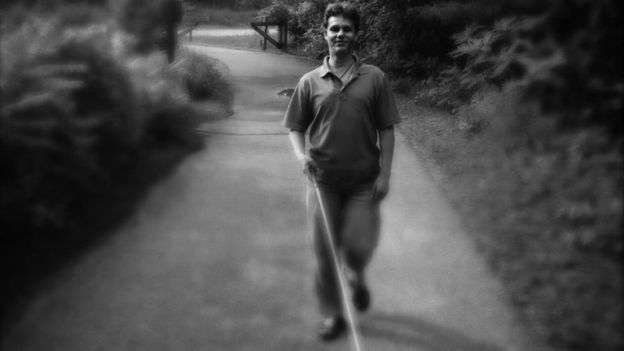
He can identify the position of the object from his echo by clicking the click. This step is called 'Acolation'.
The bats can use this 'acollocation' during the night movements and use the echo of the words to fly or move in the dark.
A new study suggests that some people who do not see eye contact also know how to use such methods. They can navigate normally using echo.
The results of this research have recently been published in the Journal of the Royal Society of Britain. This result is said to be: EcoLoctators, like bats, increase the intensity of their words.
When an object was left beside the visually impaired or left behind, they were able to sound more frequently by clicking.
"Different people make this noise differently," says Danielle Kish, who is also a researcher of this test.
He says, "I do the job with the tongue of the mouth with the tongue of the mouth, and the sound runs around and surrounded by the surrounding words. The word is so sharp that I can hear his echo after coming back hundreds of meters."
From the research that is being done with the analysis, it is known that using this method is not known only about the position of the object. It is also possible to know the size of the object, distance, and even what the object is made of.
Dr. Lor Thaler is the head of the researchers at the University of Durham of Ekronloksen.
He said, in their study, they put eight blind but skilled acolocolators in one room. Then they put the fingers in the ears and sounded loudly. The researchers silently put a metal circular disc in a place in the house.
Then the eclolikers are touched by asking them to stop the ballooning and click on the click to make a sound.
This study suggests that acolocators have to make more words to find out the position of objects than the next one.
Scientists hope that if further research is done in this regard, then in the future, blind people can also move easily using words. can identify the position of the object from his echo by clicking the click. This step is called 'Acolation'.
The bats can use this 'acollocation' during the night movements and use the echo of the words to fly or move in the dark.
A new study suggests that some people who do not see eye contact also know how to use such methods. They can navigate normally using echo.
The results of this research have recently been published in the Journal of the Royal Society of Britain. This result is said to be: EcoLoctators, like bats, increase the intensity of their words.
When an object was left beside the visually impaired or left behind, they were able to sound more frequently by clicking.
"Different people make this noise differently," says Danielle Kish, who is also a researcher of this test.
He says, "I do the job with the tongue of the mouth with the tongue of the mouth, and the sound runs around and surrounded by the surrounding words. The word is so sharp that I can hear his echo after coming back hundreds of meters."
From the research that is being done with the analysis, it is known that using this method is not known only about the position of the object. It is also possible to know the size of the object, distance, and even what the object is made of.
Dr. Lor Thaler is the head of the researchers at the University of Durham of Ekronloksen.
He said, in their study, they put eight blind but skilled acolocolators in one room. Then they put the fingers in the ears and sounded loudly. The researchers silently put a metal circular disc in a place in the house.
Then the eclolikers are touched by asking them to stop the ballooning and click on the click to make a sound.
This study suggests that acolocators have to make more words to find out the position of objects than the next one.
Scientists hope that if further research is done in this regard, then in the future, blind people can also move easily using words.